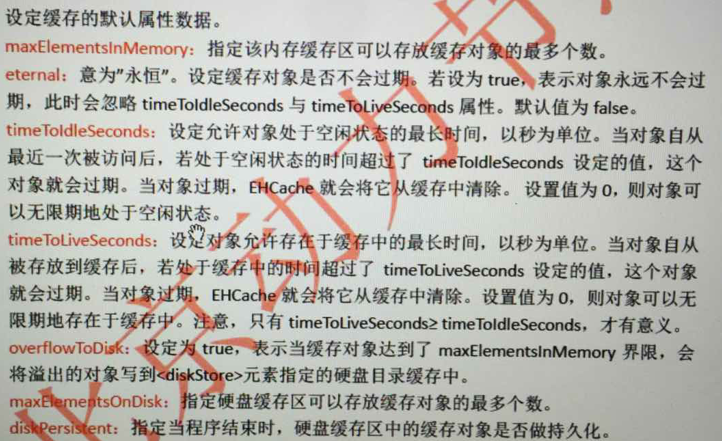缓存按应用范围可分为三类:
事物级缓存即一级缓存session缓存:
存储的当前session相关联java对象
session缓存称为hibernate的一级缓存
应用级缓存即二级缓存sessionFactory:
二级缓存根据目的和功能又可分为内置缓存和外置缓存。
内置缓存放置的是映射元数据和预定义SQL语句,内置缓存是只读的,不可修改。
外置缓存是一个可配置的插件,在默认情况hibernate不会开启这个插件。
外置缓存的存储介质是内存或硬盘。
SessionFactory的外置缓存被称为hibernate的二级缓存。
hibernate本身只提供二级缓存的规范,有第三方插件做具体实现。EHCache。
二级缓存存储的对象分为:
类对象
集合对象
query查询对象
集群范围缓存
EHCache缓存在hibernate中的使用;
1.在主配置文件中要开启二级缓存:
<property name="hibernate.cache.use_second_level_cache">true</property>
2.在主配置文件配置二级缓存区工厂:
<property name="hibernate.cache.region.factory_class">org.hibernate.cache.ehcache.EhCacheRegionFactory</property>
3.指定缓存对象(可在映射关系中配置也可在主配置文件中配置)
0.导入Jar包和配置文件



1.<class-cache usage="read-only" class="指定的对象类"/>(主配置文件中配置)
2. <collection-cache usage="read-only" collection="指定的集合对象"/>(主配置文件中配置)
<!-- 指定类缓存集合 -->
<class-cache usage="read-only" class="com.layne.beans.Minister"/>
<class-cache usage="read-only" class="com.layne.beans.Country"/>
<!-- 指定集合缓存集合 -->
<collection-cache usage="read-only" collection="com.layne.beans.Country.ministers"/>
在映射关系配置文件中配置
<class name="Country"> <!-- 指定当前类为类缓存对象 --> <!-- <cache usage="read-only"/> --> <id name="cid"> <generator class="native"></generator> </id> <property name="cname"/> <!-- 对关系关联映射关系 --> <set name="ministers" cascade="save-update" inverse="false"> <!-- 指定当前集合为缓存对象 --> <!-- <cache usage="read-only"/> --> <key column="countryId"/> <one-to-many class="Minister"/> </set> </class>
3.配置query查询缓存对象
在主配置文件中开启query缓存:<property name="hibernate.cache.use_query_cache">true</property>
query查询的结果也是可以存到一二级缓存中,但Query查询默认不会从缓存中读取数据
要使用Query读取缓存数据
1.在Hibernate.cfg.xml配置hibernate.cache.use_query_cache为true
2.要在Query语句添加 setCacheable(true):
Country country= (Country) session.createQuery(hql).setCacheable(true).uniqueResult();
Session的刷新与同步
Session的刷新是指,Session缓存中数据的更新。
Session的同步是指,将Session缓存中的数据同步更行到DB中。
执行同步的时间点只有一个:事物的提交。
刷新的时间点有三个:1.执行Query查询 2.执行Session.flush() 3.执行事物的提交
当代码中执行了对Session中现有数据的修改操作,即update()与delete()语句后,
Session缓存并不会马上刷新。即并不会马上执行update与delete的SQL语句。